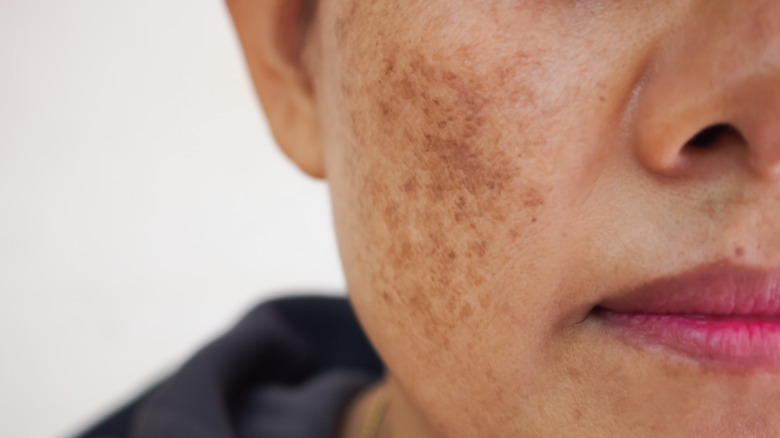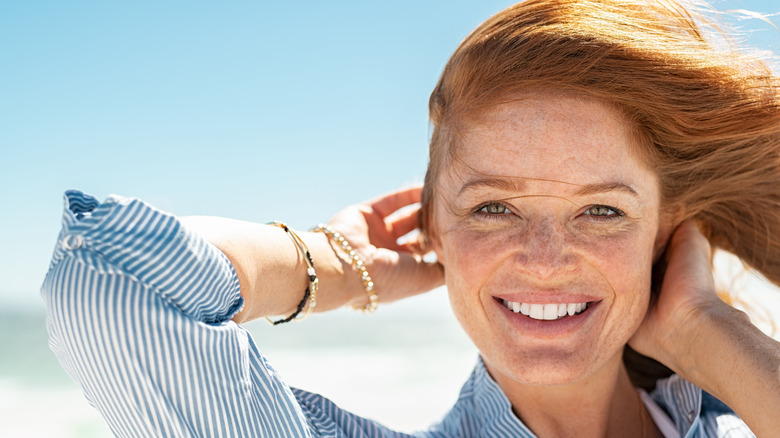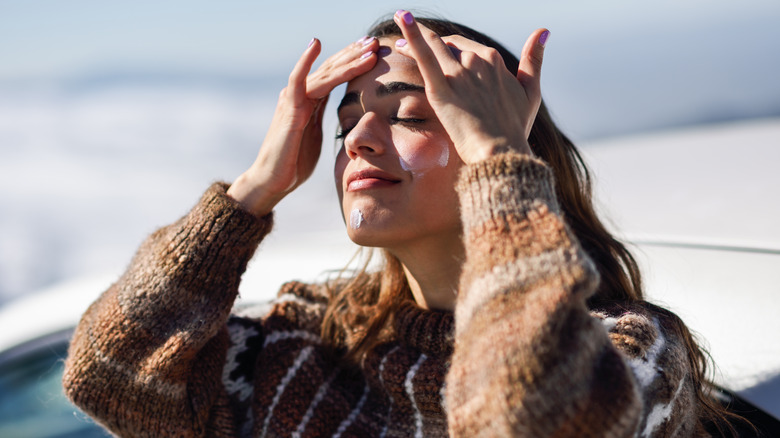The Real Reason Freckles Change With The Season
Is there anything cuter than freckles? We don't believe so. Freckles have come and gone into popularity over the decades, but due to the insane hype they've received over the past few years, we can't imagine they'll be going out of style anytime soon — and we hope they never do (via L'Officiel USA). For the most part, freckles are simply a result of genetics, with some skin types being more prone to these adorable skin accessories than others. But, as it turns out, there might be a lot about freckles that you don't know.
People all over social media are totally craving having their own collection of freckles, with some people drawing them on their faces, buying products to fake them, and even going as far as getting them hennaed and tattooed on, per Byrdie. Some have absolutely nailed this faux henna trend, making it nearly impossible to differentiate between the genetically blessed and the artistically skilled.
That being said, as realistic as some people's freckles might appear, there's one factor that might always play a role in telling the difference between real and fake. Indeed, a pretty solid giveaway is that freckles are actually seasonal, meaning that they appear more prominently in some seasons than in others.
Here's what triggers the visibility of freckles
Those of you with naturally freckled skin might have noticed that your freckles are more visible in certain seasons. But why is this? Well, the explanation might make more sense if we first discuss the source of freckles.
Freckles are typically triggered by the production of melanin, which is the pigment that gives your skin its color. Therefore, freckles occur when there's excessive melanin build-up, creating brown, tan, or red-hued freckles (via Healthline).
Exposing your skin to the sun is what most often creates freckles, therefore, it's also what can make your freckles appear more visible. When you're under the sun, your skin cells start producing extra melanin with the intention of shielding your skin and preventing sun damage. This increase in melanin is what leads to suntans as well as sunburns. When the weather starts getting warmer and the shorts start coming out, you might notice that your freckles are coming out, as well.
Wear sunscreen no matter what, suggests experts
Being under the sun can make your freckles appear darker, most commonly in areas such as your face, arms, neck, and upper body, as they are more likely to be exposed to the sun's UV rays (via Laser Care Skin Clinic). Therefore, while your freckles will certainly be present in the colder months, you might notice that they're less visible. Even if it's a cooler or even cloudy day, your skin might still be exposed to the sun, however.
Freckles or no freckles, we can't recommend the usage of sunscreen enough. According to Dr. Jennifer Lin, an assistant professor of dermatology at Harvard Medical School and co-director of the Melanoma Risk and Prevention Clinic at Brigham and Women's Hospital, sunscreen is without a doubt the most important product you can wear. "We recommend sunscreen for skin cancer prevention, including melanoma prevention, which has been demonstrated in cohort studies as well as prospective randomized trials," she explained, via Harvard Health Publishing. "People looking to ward off the aging effects from sun would still benefit from sun-protective habits, which include sunscreen, sun-protective clothing, and sun avoidance."


